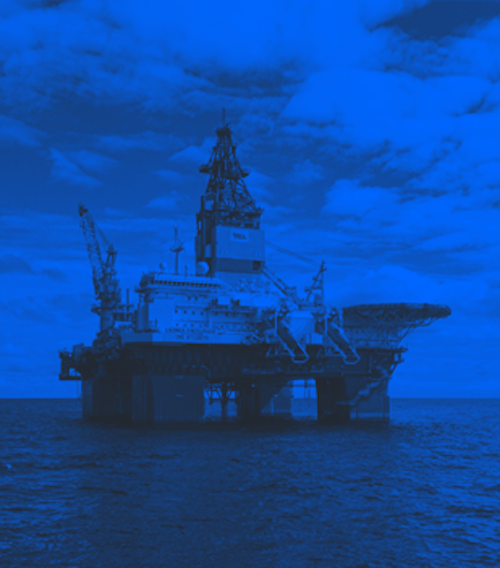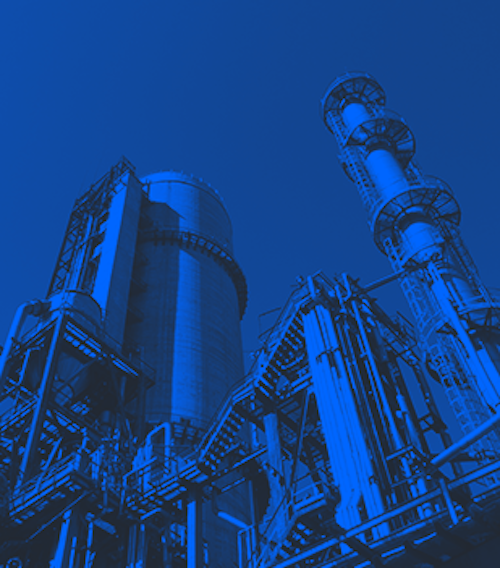5 ways barrier signs prevent accidents in high-risk industries
Discover how barrier signs prevent accidents across various sectors, learning the five key ways they enhance workplace safety.
In high-risk industries like construction, manufacturing, logistics and mining, workplace safety is a necessity. Barrier signs play a vital role in accident prevention by clearly marking hazards, guiding behaviour and reinforcing safety protocols. Designed to be seen and understood instantly, these visual cues help protect workers, visitors and equipment in often dangerous environments.
This blog explores how barrier signs prevent accidents across various sectors, highlighting five key ways they enhance workplace safety. Whether you are responsible for site management or looking to improve compliance, understanding the impact of barrier signage can help reduce risks and improve operational safety.
What are barrier signs and why do they matter?
Barrier signs are physical safety markers used to warn, direct or restrict access in hazardous or high-traffic areas. Often used alongside physical barriers like cones, fences or tapes, these signs provide clear visual communication that helps prevent accidents before they occur.
Whether it is alerting workers to dangerous equipment, restricting access to unsafe zones or guiding vehicle and pedestrian flow, barrier signs are essential to maintaining safety in high-risk environments.
The importance of safety in high-risk industries
High risk industries, such as oil and gas, refineries and petrochemical manufa, operate in environments where the potential for accidents is significantly higher than in typical workplaces.
Heavy machinery, hazardous materials, moving vehicles and complex operations create daily challenges that demand strict safety measures.
In these industries, a single mistake or oversight can lead to serious injuries, costly downtime and even fatalities. That is why safety is not just a regulatory requirement, it is a critical priority.
Implementing effective safety protocols helps protect workers, minimise risks and maintain productivity.
Barrier signs are an integral part of these safety strategies. By providing clear, immediate information about hazards and safe zones, they help workers and visitors navigate dangerous areas with confidence.
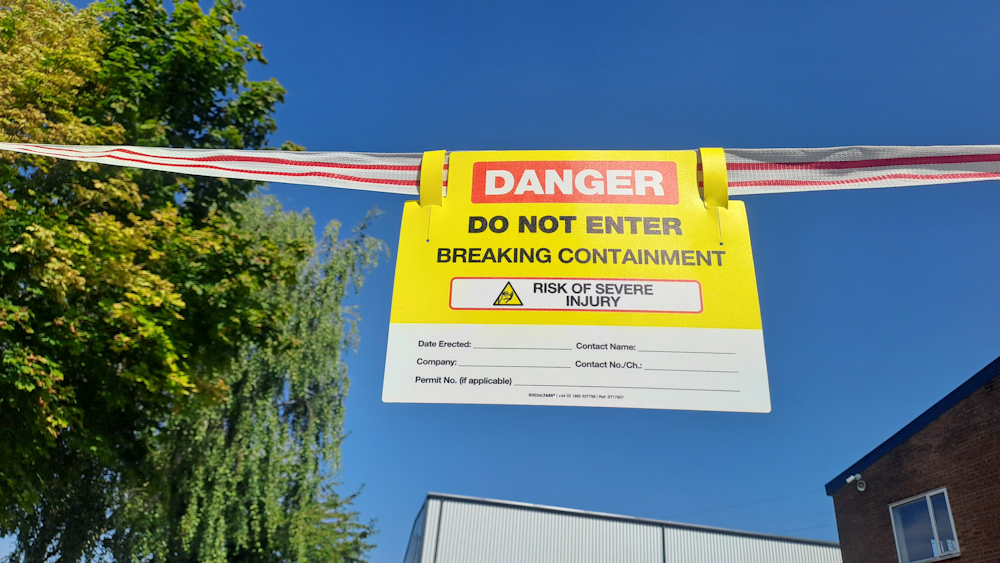
5 ways barrier signs prevent accidents in high-risk environments
Barrier signs are more than just warnings, they play a crucial role in accident prevention across high-risk industries. Here are five key ways they make workplaces safer:
1. Barrier signs enable immediate hazard identification
In fast-moving environments like construction sites or factories, workers need to recognise dangers quickly. Barrier signs use clear symbols and bold colours to alert people to hazards such as:
- Electric risks
- Chemical spills
- Uneven surfaces
This instant recognition helps prevent accidents before they happen.
2. They reinforce safety protocols and regulatory compliance
Barrier signs remind employees and visitors to follow established safety rules, such as wearing personal protective equipment (PPE) or adhering to restricted areas.
By displaying mandatory guidelines, these signs support compliance with workplace safety laws and reduce the likelihood of violations and accidents.
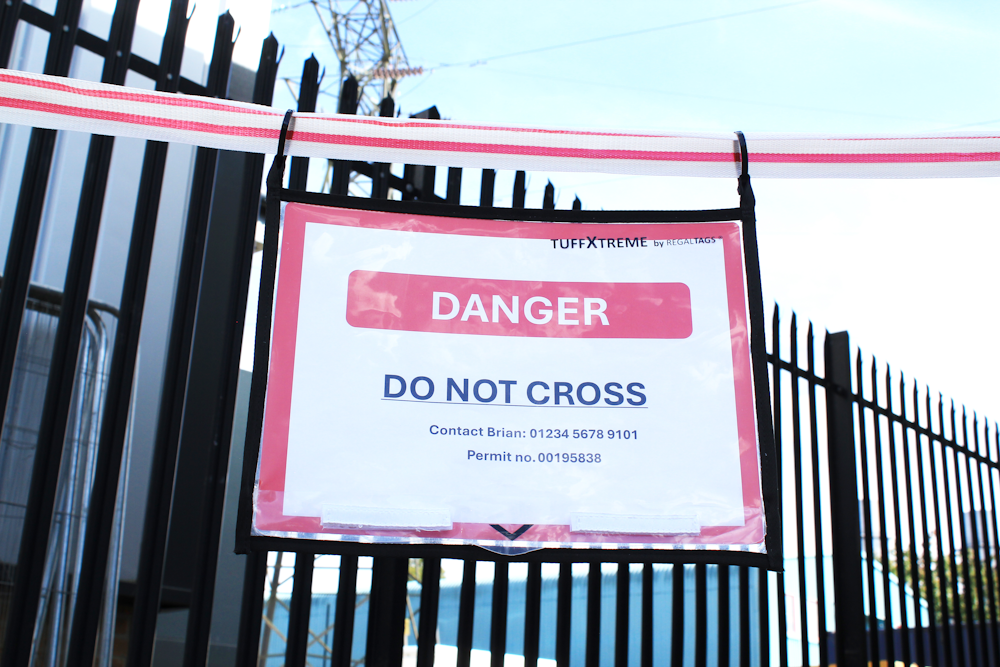
3. Barrier signs help segregate pedestrians and vehicles effectively
Mixing foot traffic with heavy machinery or forklifts can be dangerous. Barrier signs clearly mark pedestrian walkways, vehicle routes and no-go zones. This reduces collisions and confusion.
In warehouses and ports, this segregation is vital for maintaining smooth, safe operations.
4. They support emergency response and safe evacuation
In emergencies like fires or chemical leaks, barrier signs guide workers and visitors to safe exits and assembly points.
Clear safety signage ensures that evacuation routes are visible and unobstructed. This enables quick and orderly evacuations to minimise injuries.
5. Barrier signs maintain ongoing risk awareness and communication
Workplace risks can evolve because of new equipment, ongoing maintenance or changing conditions.
Barrier signs provide continuous communication about current hazards, helping maintain a culture of safety awareness. When personnel understand the risks, they are far more likely to take the warning seriously and act accordingly.
Regularly updated signs keep everyone informed and alert to potential dangers.
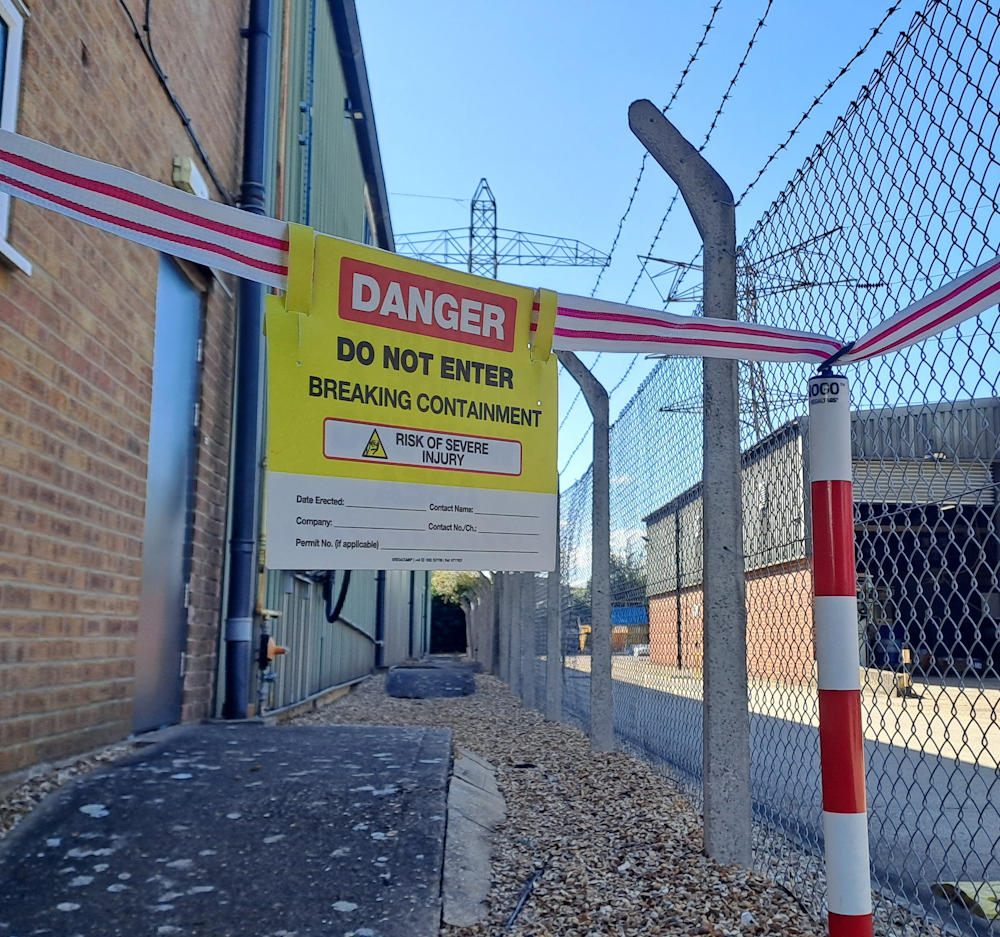
Tips for using barrier signs effectively: Design, placement and durability
To maximise the impact of barrier signs in high-risk environments, it is essential to go beyond just putting up a sign. Effective signage depends on thoughtful design, strategic placement and long-term durability. Here is how to get it right:
- Proritise clear, recognisable design: Use high contrast colours, simple graphics and large, readable fonts to ensure signs are instantly understandable. Even from a distance. Stick to standardised symbols where possible as these are more likely to be universally recognised.
- Position signs where they matter most: Placement of barrier signs is critical. They should be located at eye level and in areas where decisions need to be made, such as entrances to restricted zones, near moving equipment or alongside temporary hazards.
- Choose durable materials for harsh conditions: High-risk environments often involve exposure to weather, chemicals or heavy traffic. Use barrier signs made from industrial-grade materials such as Prism® polypropylene, that can withstand UV rays, moisture, abrasion and impact over time.
- Update signage as conditions change: A sign that is outdated or irrelevant can be as dangerous as having no sign at all. Regularly inspect and update barrier signage to reflect current site conditions, new risks or changes in layout.
- Combine with physical barriers when needed: Barrier signs are most effective when used alongside physical controls like cones, gates or fencing. This dual approach reinforces the message and physically limits unsafe actions, reducing the risk of accidents even further.
Why barrier signs are critical for preventing accidents
In high-risk industries, the margin for error is slim and the consequences of inaction can be severe. Barrier signs provide a simple, effective way to communicate dangers, guide safe behaviour, and enforce compliance across fast-paced, hazardous environments.
From highlighting immediate threats to supporting emergency procedures and promoting ongoing awareness, barrier signs act as a constant visual safety net. They don’t just reduce accidents, they help create a proactive safety culture that protects workers, equipment and operations.
When designed, placed, and maintained correctly, barrier signs are a cost-effective safety measure with high impact. For businesses operating in challenging environments, they are not optional, they’re essential.
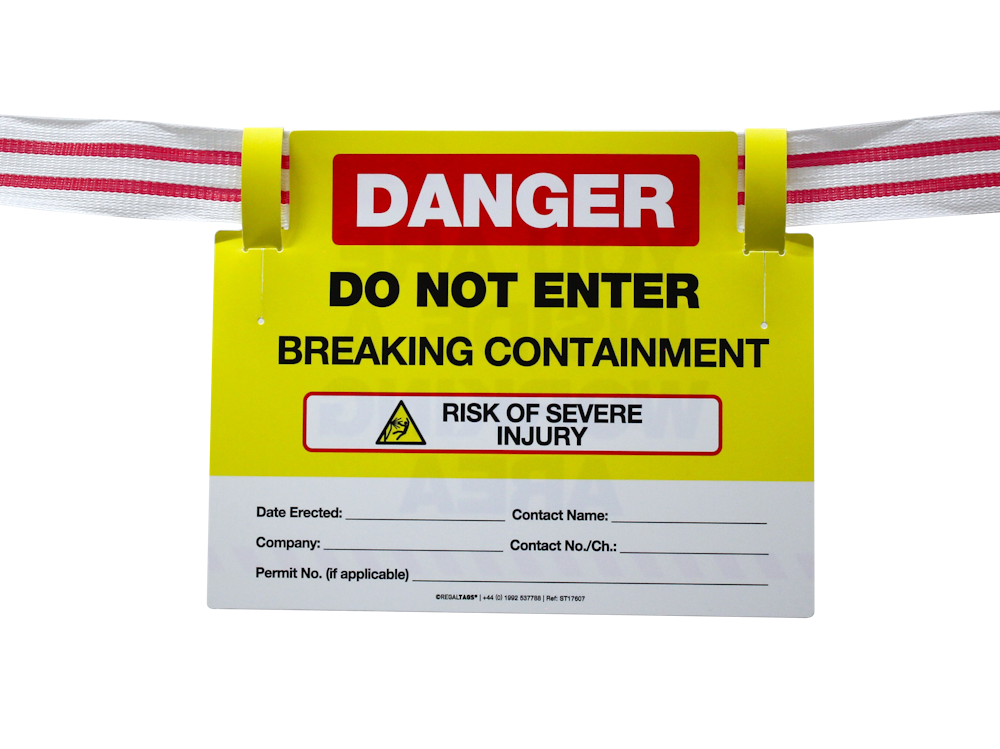
Barrier signs from REGALTAG
Looking for durable, high-impact barrier signs that meet the demands of high-risk environments? REGALTAG’s barrier signs are designed for maximum visibility, compliance and resilience.
Part of the trusted NoGo Safety Barrier range, these signs help clearly communicate hazards, restrict access, and reinforce safety protocols across industrial sites, warehouses, logistics centres and more. With robust materials and highly visible designs, REGALTAG’s barrier signs stand up to harsh conditions, keeping people safe and operations compliant.
Explore the full range today to find the right solution for your safety needs.
Subscribe
Join 18,000+ others receiving our monthly updates. Free Tag insights delivered straight to your inbox.
